It was no secret that Yadin's excavations at sites in Israel, such as at Hazor in the 1950s and at Masada in the 1960s, were in part undertaken in the hope of reinforcing Jewish claims to the land by linking them to biblical stories and other famous events. Some have long charged Yadin with a political agenda detached from the truth - and cast a shadow over his interpretations of the finds at Masada and elsewhere in the Levant. In 1995 and 2002, Nachman Ben-Yehuda, a sociologist also at the Hebrew University of Jerusalem, published his own interpretation of the finds from Masada in two separate books - The Masada Myth and Sacrificing Truth. He concluded that Yadin had been incorrect in many of his interpretations, perhaps deliberately so, in the interest of creating a nationalist narrative to help the young state of Israel forge an identity for itself.
Subsequently, Amnon Ben-Tor, who is now the Yigael Yadin Professor of Archaeology at the Hebrew University of Jerusalem, and who had excavated with Yadin at Masada, published a spirited defence of Yadin and his findings, titled Back to Masada (2009). In this book, Ben-Tor went through the archaeology again, dismissing each of Ben-Yehuda's points and basically confirming Yadin's point of view.
Yet the dispute goes on. The story of Masada is more than just a story of the archaeological excavations. It is an example of how archaeologists use historical information to supplement what they find during their excavations and to flesh out the bare details provided by the archaeological discoveries. Yadin made particular use of the writings of Flavius Josephus - the Jewish general turned Roman historian who wrote two books about the Jews in the first century CE and who is the primary source for what might have taken place on top of Masada nearly 2,000 years ago. And Masada shows how the relationship between archaeology and the historical record cuts both ways; since we cannot be certain that Josephus's discussions are 100 per cent accurate, we can use archaeology to corroborate - or to challenge - the ancient text.
Masada also serves as a cautionary tale about using (or misusing) archaeological evidence to support a nationalistic agenda, as some scholars have suggested Yadin did. The debate over Masada involves the trustworthiness of Josephus's account; the credibility of Yadin, perhaps the most famous of all Israeli archaeologists; and the influence of nationalism on the interpretation of archaeological discoveries. Whom do we believe? How should we view this seemingly tragic, heart-wrenching ancient site and event? And can we ever tap evidence from thousands of years in the past to establish the origins, legal claims and birthright of peoples today?
Masada is a tall mountain with a flat plateau on top, longer than it is wide, rising high above the surrounding dry and arid desert. It has been a tourist attraction ever since Yadin's excavations in the mid-1960s. Hundreds of tourists per day now roam around the ruins on top of the mountain - half a million visit every year. It is the second most popular tourist site in Israel, after Jerusalem, and was named a World Heritage Site by UNESCO in 2001.
It lies at the southern end of the Dead Sea, far to the south of Qumran and most of the caves in which the Dead Sea Scrolls were found. The top is accessible on foot only via a narrow winding track known as the Snake Path, which leads 400 metres (1,300 feet) up the front face of the massif and the Roman siege ramp still in place on the western side. It gets so hot here that rules have been put in place instructing tourists that they may begin the climb only if it is before 9:30 in the morning. After that, there's too much chance of getting dehydrated during the ascent. Those who begin climbing before dawn are rewarded by one of the most spectacular sunrises they will ever see, but most tourists opt to ride up in the cable cars that have been installed, gliding above the Snake Path and waving to those below.
The work that Yadin conducted at Masada over two excavation seasons - from October 1963 to May 1964, and again from November 1964 to April 1965 - was a milestone for archaeology in several ways. For example, Yadin was the first to use international volunteers to help dig the site. He recruited participants by placing ads in newspapers, both in Israel and in England, and wound up with volunteers from 28 countries.
The sheer numbers that took part is also amazing - Yadin claimed to have had no fewer than 300 volunteers digging at Masada at any given moment during his excavations. Those included volunteers from the Israel Defense Forces, high-school students and kibbutz members, in addition to the international participants.
The logistics of running the dig were staggering. Archaeologists active today, who were graduate students at the time, talk about helicopters flying tools and equipment up to the top of the mound, though the more usual route was to carry everything up the western side of the mound via the Roman siege ramp. Expedition members lived in tents pitched at the foot of this same Roman ramp.
The excavation itself has become the stuff of legend. Yadin said that when they first began planning the excavation, they couldn't see any structures with a recognisable plan on top of Masada. The entire area, he said, seemed to be covered with 'mounds of stone and rubble'. In actuality, many of the buildings could be seen quite plainly, once the team took aerial photographs so that they knew where to dig.
By the time they finished the excavations, they had discovered that Masada was an elaborate palatial settlement, originally built by King Herod after his successful journey to Rome in 40 BCE, in case he ever had to flee Jerusalem and seek refuge elsewhere. It was later taken over and occupied by the Sicarii, or Dagger Men, rebels fighting Rome in the aftermath of the First Jewish Revolt more than seven decades later.
They found numerous small items: hundreds of coins, pieces of pottery with inscriptions on them, and small pieces of jewellery
Masada actually boasted two palaces. One was at the northern end of the rock plateau. It had three levels embedded in the side of the cliff and was placed to grab summer breezes in the intense heat of the Judaean desert. The other palace was on Masada's western side. In addition to the two palaces, Yadin's team found rooms and buildings that served as tanneries, workshops and even a synagogue. They also found numerous storage areas to hold food and other provisions, some of which had jars that still contained charred grain and cisterns for holding rainwater, for there was no fresh water to be had in the arid desert region that surrounded Masada.
Some of the walls were covered in plaster painted with images in deep blues, brilliant reds, yellow and black, of which only fragments now remain. A few of the floors were inlaid with mosaics featuring elaborate designs like those found more commonly in Greece or Rome. Presumably artisans hired by Herod the Great created these, perhaps to emulate what he had seen in Rome.
Yadin reconstructed some of the original buildings from fallen stones. The best example of this at Masada was the large complex of storerooms that were in the northeastern part of the site. Here, just the lower portions of the walls were left, but the stones from higher up in the walls were all lying right where they had fallen. Yadin and his team used every available stone to rebuild the walls, which turned out to be 11 feet high. In order to show what they had done, they painted a black line to separate the lower part that they had excavated from the upper part that they had reconstructed.
Yadin said they put 'every grain of earth ... through a special sieve'. Nearly 50,000 cubic yards of dirt was sifted - the first time that every single bucket of dirt had been sifted at an excavation in Israel. As a result, they found numerous small items that would probably have been missed otherwise, including hundreds of coins, pieces of pottery with inscriptions on them, and small pieces of jewellery such as rings and beads. The coins allowed Yadin to date very precisely the remains that they were uncovering - particularly the coins that had been made just a few years earlier, during the First Jewish Revolt.
The first Jewish rebellion began in 66 CE, when the Jews in what is now Israel rose up against the Romans who were occupying their land. The revolt lasted until 70 CE, at which point the Romans captured Jerusalem and burnt most of it to the ground, including the Temple that had been built there by Herod the Great to replace the original one constructed by King Solomon, which had been destroyed by the Neo-Babylonians centuries earlier. It is said that both the First and Second Temples - that is, those built by Solomon and Herod, respectively - were destroyed on the same day of the year, which is today a Jewish day of mourning known as Tisha B'Av.
When the rebellion ended, a group of rebels managed to escape the destruction of Jerusalem and settled at Masada. Led by a man named Eleazar ben Ya'ir, these were the Sicarii. They took over the fortified buildings and palaces that Herod had originally built on top of Masada as a place of last refuge.
In his account of what happened, though, Josephus got some of the details wrong, and so we suspect that perhaps he wasn't ever there himself, but was using someone else's notes. For instance, he says that Herod 'built a palace ... at the western ascent ... but inclined to its north side.' In actuality, as noted, the archaeologists found two palaces, not one - at the west and at the north - on top of Masada.
Some of the other details that Josephus gives, though, are quite correct - for instance, he describes the baths that were built there, the fact that the floors in some of the buildings 'were paved with stones of several colours', and that many pits were cut into the living rock to serve as cisterns. Josephus must be referring to the sort of mosaics that Yadin found still partially intact on some of the floors. As to the cisterns that he mentions, some of them dug into the rock on top of Masada were simply enormous. Yadin estimated that they each had a capacity of up to 140,000 cubic feet of water; added together, they could hold almost 1.4 million cubic feet or more than 10 million gallons of water.
The Romans surrounded Masada with a wall that went the entire way around the mountain on the desert floor, so that no one could escape
In the end, the rebel group held out for three years, raiding the surrounding countryside for food, until the Romans decided to put an end to them and the final remnants of the rebellion.
Josephus wrote that the Romans, led by General Flavius Silva, surrounded Masada with a wall that went the entire way around the mountain on the desert floor, with separate garrisons or fortresses built at spaced intervals along the wall, so that no one could escape. Today, eight of Flavius's fortresses can still be seen from the top of Masada when looking down at the surrounding countryside.
Next, the Romans began constructing a long ramp built of earth and stones, making use of a natural ridge that reached from the desert floor to within '300 cubits' of the top of Masada. Once the ramp was constructed, siege engines, like a battering ram and catapults that flung large stones and ballistae that shot huge arrows, could be wheeled upon its length and used against the walls of Masada. Josephus noted:
Today, full-size replicas of some of these siege engines can be seen at the site, left there after ABC filmed a miniseries about Masada that aired in 1981. Yadin and the other archaeologists uncovered other objects during their excavations in the 1960s that can also still be seen at the site, including what look like catapult balls that were flung up by the Romans, and possibly slingstones that were thrown back down by the Jewish defenders.There was ... a tower made of the height of 60 cubits, and all over plated with iron, out of which the Romans threw darts and stones from the engines, and soon made those that fought from the walls of the place to retire, and would not let them lift up their heads above the works.
After the Roman siege engines were set up, the real siege began. Josephus wrote that General Silva ordered the battering ram to be dragged up the ramp and set against the wall. Several men grabbed the rope that was tied to the great piece of pointed wood that formed the battering ram and pulled it back, back, back. When they let go, the ram smashed against the fortification wall with a huge crash. It wasn't going to be long before they had breached the wall.
The Jewish defenders, however, had created their own wall just inside, which was made of wood and earth, so that it would be soft and yielding, as Josephus wrote. He said that they laid down great beams of wood lengthwise right next to the inside of the wall, then did the same about 10 feet or so away, so that they had two large stacks of wooden beams. In between the two stacks, they poured earth, so that in the end, they had an extremely thick wall with wood on both sides and an earthen core. This second wall, set up against the stone fortification wall, helped to absorb the blows of the battering ram, spreading the impact. Thus, it took the Romans far longer than they expected to knock a hole in the wall. And even when they did punch a hole in the outer wall, they were still faced with this thick wood-and-earth wall.
'It is still in our power to die bravely, and in a state of freedom, which has not been the case of others, who were conquered unexpectedly'
In the end, they simply set fire to it, Josephus wrote, and then made preparations to enter the city. By the time the flames had died down, night had fallen, and Josephus said that the Romans returned to their camps for the night and prepared to overrun the defenders the next morning.
This brief respite from the Roman attack provided the Jewish defenders the time and opportunity to decide to kill themselves rather than be killed or taken prisoner and enslaved by the Romans. Josephus wrote that Eleazar asked each family man to kill his own wife and children, declaring: '[I]t is still in our power to die bravely, and in a state of freedom, which has not been the case of others, who were conquered unexpectedly.'
The men then drew lots, choosing 10 of their number to kill all the others. The 10 then drew lots and selected one to kill the other nine. He then killed himself, thereby becoming the only person to commit suicide, technically speaking, which is against Jewish law. In effect, though, it was a mass suicide and when the Romans entered the next morning, they were greeted by a vast silence. Only when two women and five children emerged from their hiding place in a cistern did the Romans learn the truth of what had happened, for the women told them of Eleazar's speech, repeating it word for word. According to Josephus, 960 people died that night.
The dramatic story has reverberated through the ages until the present day. In fact, after Yadin's excavations at the site, the Israeli army used to hold its induction ceremonies for new recruits up on top of Masada, making them swear at a dramatic nighttime ritual in front of a blazing bonfire that 'never again; never again' would they allow such a thing to happen.
Problems with Josephus's story remain, not least of which is the fact that, if the two women and five children really had been hiding in the cistern, there is no way that they would have been able to hear Eleazar's speech, and hear it so clearly that they were able to repeat it and Josephus could quote it word for word.
The Romans poured in and massacred the Jewish defenders. It was not a mass suicide, but a mass slaughter
A larger problem is the fact that, if the Romans had punched a hole in the wall even as night was falling, they would never have returned to their camps for the evening. Roman military tactics at the time called for them to press the advantage whenever and wherever they had it, regardless of the time of day or night. Thus, they would have gone straight through the breached and burning wall, leaving no time for a discussion of the plan and a vote on it, for Eleazar to make his speech, for successive lots to be drawn, no time for the husbands to kill their wives and families, no time for the 10 men to kill the others, and no time for the last man to kill the other nine. In short, it couldn't have happened as Josephus has described it.
More likely what happened was exactly what we might have expected. When the Romans breached the wall, they poured in and massacred the Jewish defenders. It was not a mass suicide, but a mass slaughter. Josephus, writing later back in Rome and using notes and daybooks from the commanding officers who were present, was probably asked to whitewash the whole thing. In fact, Josephus took the story that he tells about the men killing their families, 10 men killing the others, and then one man killing the rest, from his own experience.
Several years earlier, in 67 CE, during the initial rebellion against Rome, Josephus had been a Jewish general fighting the Romans at a site called Jotapata. They managed to hold off the Romans for 47 days, but then he and 40 others took refuge in a cave, where they decided to commit suicide, with each man killing another, rather than surrender. In the end, only Josephus was left alive with one other man, whom he persuaded to surrender with him. The story Josephus told of what happened at Masada seems to be the story of what happened to him at Jotapata.
It was with some of these Josephus-related problems in mind, including the story of the women and children hiding in the cistern while the rest of the people committed suicide, that Yadin decided to go to Masada. His excavation was solid, but his interpretation remains a matter of great debate. For instance, among the objects that Yadin found were belt buckles, door keys, arrowheads, spoons, rings and other items made of iron, in addition to much pottery and numerous coins. He interpreted these as belonging to the Jewish defenders of Masada, as indeed they might have, but some could have belonged to the Roman besiegers or even to later inhabitants or squatters at the site.
He also found fragments of scrolls, including scraps from the Book of Psalms, one containing portions of Psalms 81 to 85 and another from the last chapter in the book, Psalm 150, which reads 'Praise ye the Lord ... Praise Him with the sound of the trumpet.' Other very important but fragmentary nonbiblical texts were also in place, including a fragment from a scroll whose lines of text are identical to one found in the Dead Sea caves at Qumran, which led Yadin, and many other scholars since then, to wonder whether there was any connection between the defenders of Masada and the inhabitants of Qumran.
'Even the veterans and the more cynical among us stood frozen, gazing in awe at what had been uncovered'
Perhaps most important, Yadin also found bodies at the site, though fewer than 30 in all (and certainly not anywhere near the 960 that Josephus reported), some with hair still intact and leather sandals nearby. It is these that have generated the most debate in recent years. Twenty-five of them were in a cave near the top of the southern cliff face; they were given a state funeral in 1969, though over Yadin's objections, since he said they couldn't be sure whether they were the Jewish defenders of Masada, the Roman attackers or some other group of people, perhaps from a different period altogether.
Three other bodies were found near a small bathhouse on the lower terrace of the northern palace. Professor Ben-Tor, the current director of the excavations at Hazor, says that he was the one who excavated these three skeletons and that it was the most thrilling day in his professional life. In his book, Yadin made the most of these three bodies, stating that when they first came across the remains: 'Even the veterans and the more cynical among us stood frozen, gazing in awe at what had been uncovered.'
One of the bodies, Yadin said, was 'that of a man of about 20 - perhaps one of the commanders of Masada'. Next to him were armour scales, dozens of arrows, an inscribed potsherd, and fragments of a prayer shawl. Nearby, on a plaster floor stained with what looked like blood, was the skeleton of a young woman. Her hair was still preserved, 'beautifully plaited ... as if it had been just been freshly coiffured'. Her sandals also were preserved, next to her body. The third body, Yadin said, 'was that of a child'.
Yadin believed that they formed a family group who died in close proximity to each other. This has been the focus of much debate over the years, as have the pottery sherds with names written on them in ink that he found, including one that says 'ben Ya'ir'. To Yadin, these bodies and the sherds confirmed Josephus's story and the existence of Eleazar ben Ya'ir.
Unfortunately for Yadin, more recent forensic analysis indicates that the members of the so-called family group were only a few years apart in age and couldn't possibly have been a 'family'. The man was more likely about 22 years old, the woman was 18, and the child was a boy about 11 years old.
There are other problems as well, including the fact that there were 11 inscribed sherds found instead of 10; pig bones, indicating that non-Jews resided there, were mixed in with some of the burials; and so on. These were duly listed in the books written by Ben-Yehuda and then dismissed in turn by Ben-Tor.
Regardless of whether one follows Ben-Yehuda or Ben-Tor in reviling or revering Yadin, Ben-Tor's concluding remarks in his book in defence of Yadin still ring true. As he said: 'Placing Masada on the scientific agenda ... on the one hand, and in the public consciousness as a tourist site on the other, are both the proper expression and a true monument to the two aspects of Yadin's personality: the scholar and the public figure.'
Overall, Yadin's excavations at Masada served as a milestone for archaeology in Israel, especially for use of multinational volunteers and numerous other aspects of the logistics of the operation. They remain significant today for tourism, of course, but also because they are at the heart of recent discussions on the nature of interpretations made by archaeologists, especially those who might or might not have a nationalist agenda beyond a simple reading of the data that they have uncovered.
The link between archaeology and nationalism is not unique to Yadin or Israel; a recent edited book on nationalism and archaeology in Europe points out that it was actually the appearance of nationalism in Germany, Italy, Denmark, and elsewhere that created and institutionalised archaeology as a science, complete with museums in which to store the retrieved artefacts, academic societies for the professionals, journals in which to publish the results of excavations, and university professorships to help teach students about their own recovered history. While there is a concerted effort among archaeologists today to avoid being unduly influenced by nationalism or other similar sentiments, that may not always be possible.
Excerpted from Three Stones Make a Wall: The Story of Archaeology by Eric H Cline. 2017 by Princeton University Press. Reprinted by permission.
Eric H Cline is professor of classics and anthropology and director of the Capitol Archaeological Institute at George Washington University. He has more than 30 seasons of excavation experience. His forthcoming book is called Three Stones Make a Wall: The Story of Archaeology (2017).
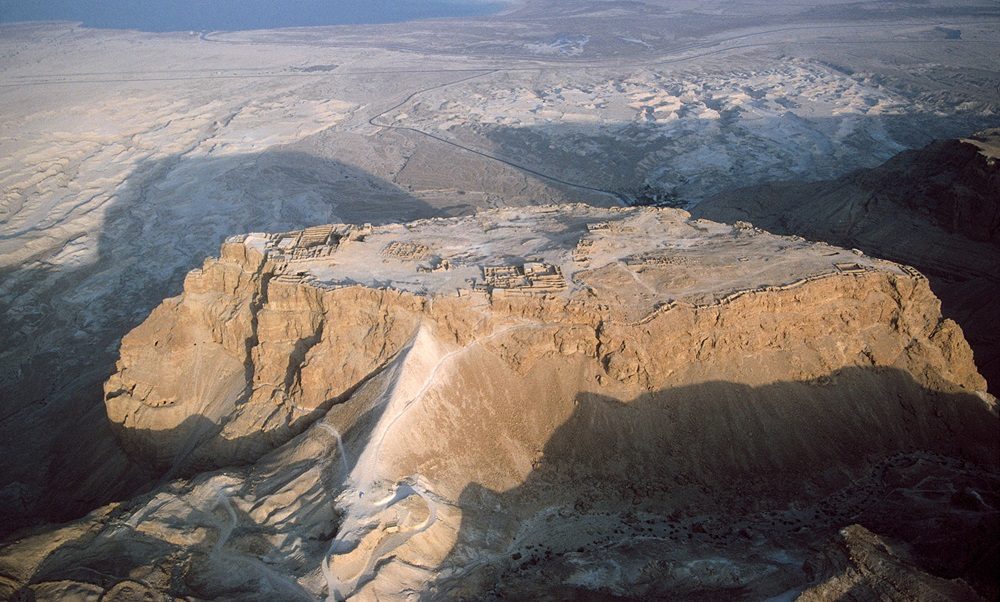
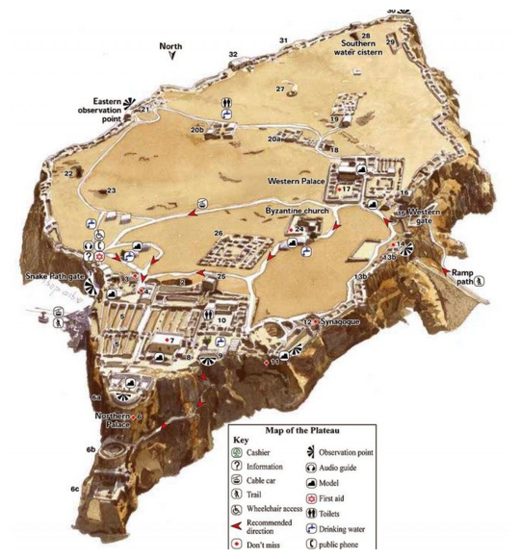

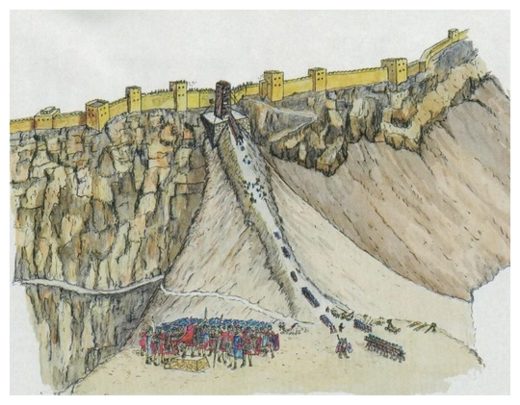

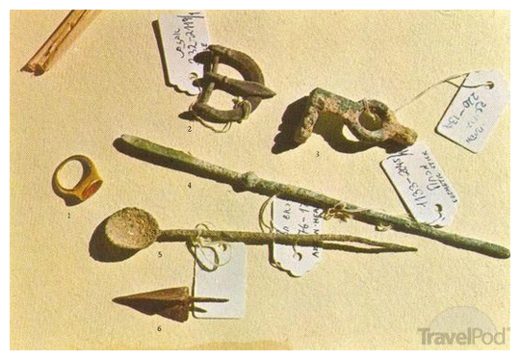
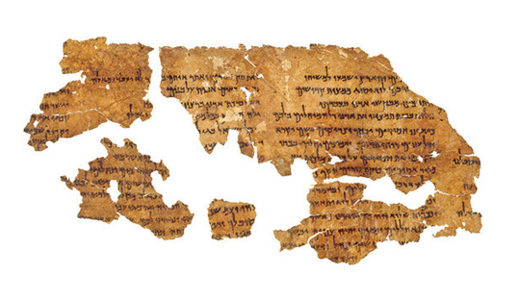



This doesn't make sense.